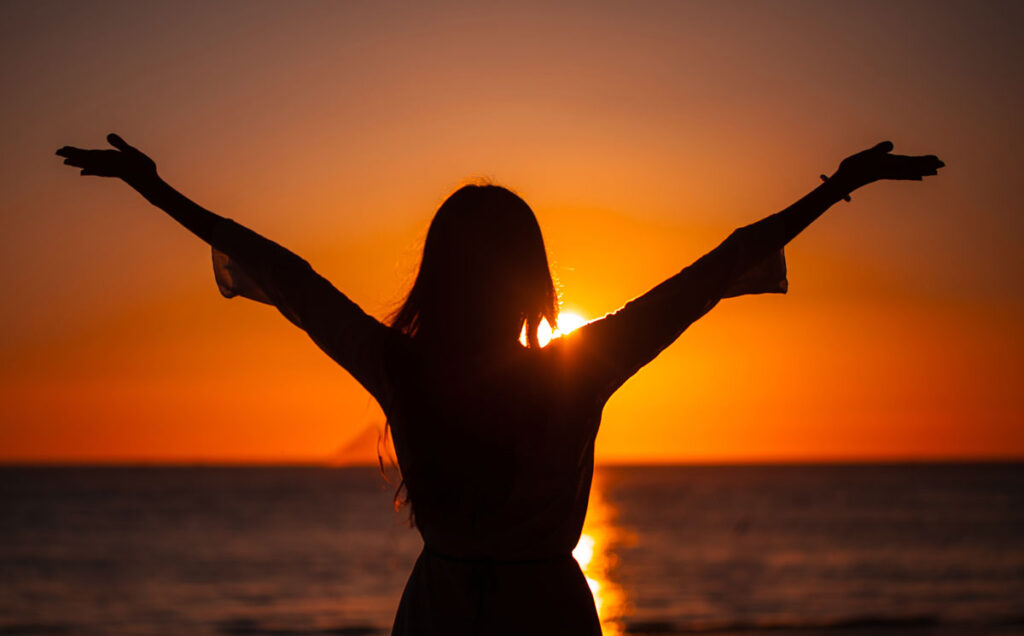Though several meridians travel through the shoulder segment, I think the Gall Bladder Meridian is of particular importance to the excessive responsibility we often take upon the shoulders. The Gall Bladder Meridian is part of the Wood element – the psychic domain of Hun. It has to do with our capacity to respond appropriately to the events life is bringing to us.
Tension in the shoulder area also arises when we try to stop the movement of life. When we do so, we lose our ability to respond to life’s changes. This has much to do with conditionings and patterns of defence we learned in childhood, and with related tensions in the shoulder and neck area along the Large Intestine Meridian.
As Wilhelm Reich says, “…inhibited pleasures is transformed to rage and inhibited rage is transformed into muscle spasms.” * The life-force towards pleasure, towards the yes, is disconnected and replaced by the no-no attitude, which is reflected in muscular armoring. Reich says that “the elusive residue of the armor” is “psychic contactlessness.” Wilhelm Reich: Character Analysis, 1945, 1990 The Noonday Press, New York, pages 389, 311.
“A deficiency of Hun energy can manifest as a feeling of powerlessness; an excess can manifest in aggressive feelings. In either case, there is some difficulty with response-ability.”
∗ The balance is self-assertion, which includes taking your space and standing your ground. Shoulder tensions can result from conflicts about self-assertion and self-expression, or from excessive self-control.
∗The Joy of Feeling: Bodymind Acupressure, by Iona Marsaa Teeguarden, Japan Publications, Inc., Tokyo and New York, page 73.
Different positions of the shoulder show different psychological functions (as described by Dychwald and others). Forward bent shoulders have to do with the fear of being hurt or vulnerable. Raised shoulders show fear, the repression of fear, and the related anger. Round and bowed shoulder show that somebody is overburdened with the demands of life, or taking on more responsibility than s/he can handle. Narrow and underdeveloped shoulders may reflect a dependent personality, or difficulty in handling the pressures and changes of life. Raised and arched shoulders often are also rigid, indicating inability to release fear. Retracted and pulled back shoulders have to do with holding back emotions, and restraining the movement of striking out towards the world, so as not to lose one’s temper.
When a person is angered, s/he experiences a strong wave of energy. The yang emotion of anger is associated with the Liver Meridian, and its ascending energy brings this strong wave of energy up to the shoulders, neck and upper arms, where it concentrates particularly in Gall Bladder points #20, 21 and 22. Part of the anger reaction is a rush of adrenaline, so that the cardiac and respiratory rhythms accelerate and the voluntary muscles receive more energy due to glycogen liberated by the liver. There is also a strong felt need to express the anger by words and action. When anger is repressed, energy will be concentrated and trapped in the upper arms, shoulders and neck.
This reminds me of a woman who felt that “life is a war.” In a JSD session, the moment she started to assert herself, she started to “strike out” against the world with her arms and shoulders. This movement released the blocked anger energy and helped her immensely. She felt more calm and “at peace with the world.” She began to know what it means to take one’s space. Even weeks later, she pointed out how important it was for her to allow the movement, the voice and the emotion to come.
The two other meridians which are very important for the shoulder region are the Small Intestines and Triple Warmer. As previously discussed, their traditional functions are assimilation and transformation of energy. Both have a strong psychological relationship to the outer world. The Triple Warmer has to do with social relations, and the Small Intestine with assimilation of psychological events – that is, the capacity to take things in and experience or digest them, making use of them to learn more about ourselves and our world. Since both these meridans are directly related to Shen, their release in the shoulder-arm area normally brings a deep relaxation for body and mind.
From a more traditional view in Chinese medicine, most shoulder problems belong to the “blockage” group of diseases. When people are tired or exhausted, external evils like wind, cold and dampness can enter easily in the body. When they attack the shoulders, these excesses obstruct the circulation of the Qi and Blood in the channels, disrupting related muscle functions. As we have discussed, blockages of energy also occur from internal sources, such as strong emotion, which can stop the Qi from circulating. The following is one treatment for blockage of Qi resulting in painful shoulders. It is particularly useful for contraction and pain at the anterior part of the shoulder, as well as peri-arthritis of the scapula-humeralis and bursitis.
In Chinese medicine, the word PEI is used to indicate all diseases characterized by pain or – in other words – by energetic obstructions. In Oriental medicine, a blocked shoulder (not regarding the origin, external or internal) is an emptiness of yang and an excess of yin. It is emptiness of yang because perverted energies (external evils like humidity and cold) can only penetrate when yang is deficient. Because yang is too weak to make the yin circulate, the yin gets more and more condensed and immobile, until at the extreme the cold and humidity in the shoulder area finally threatens to completely immobilize the shoulder.


